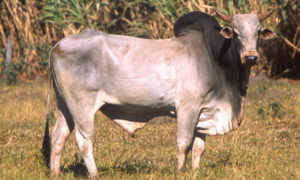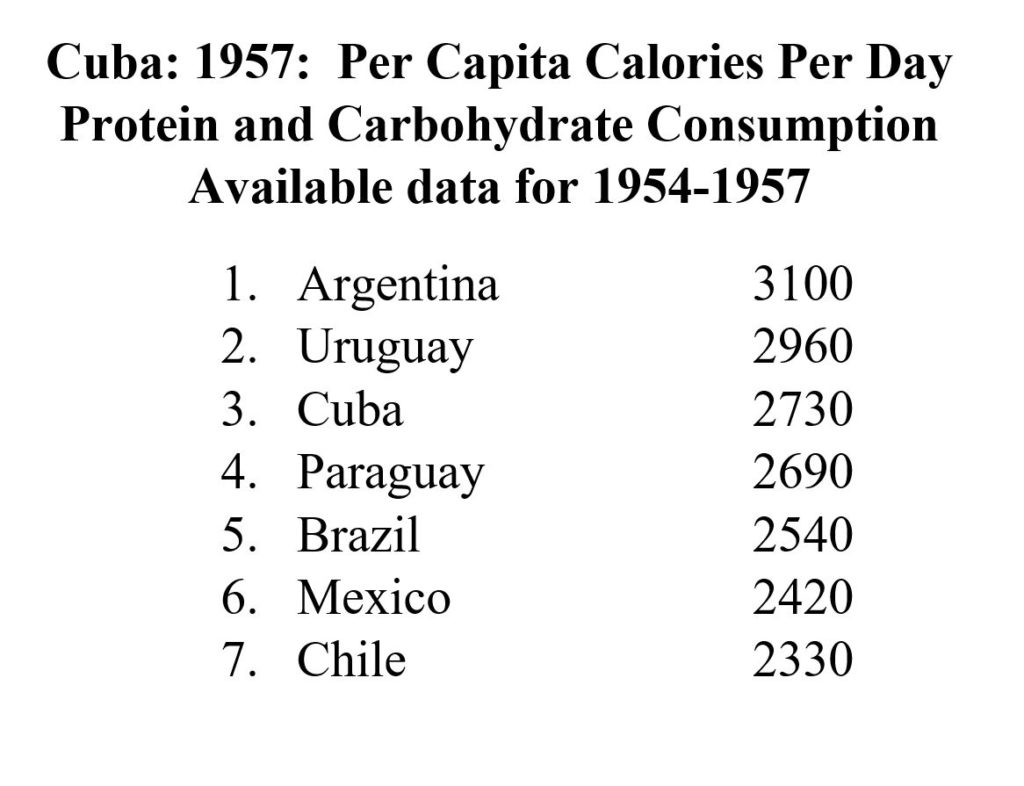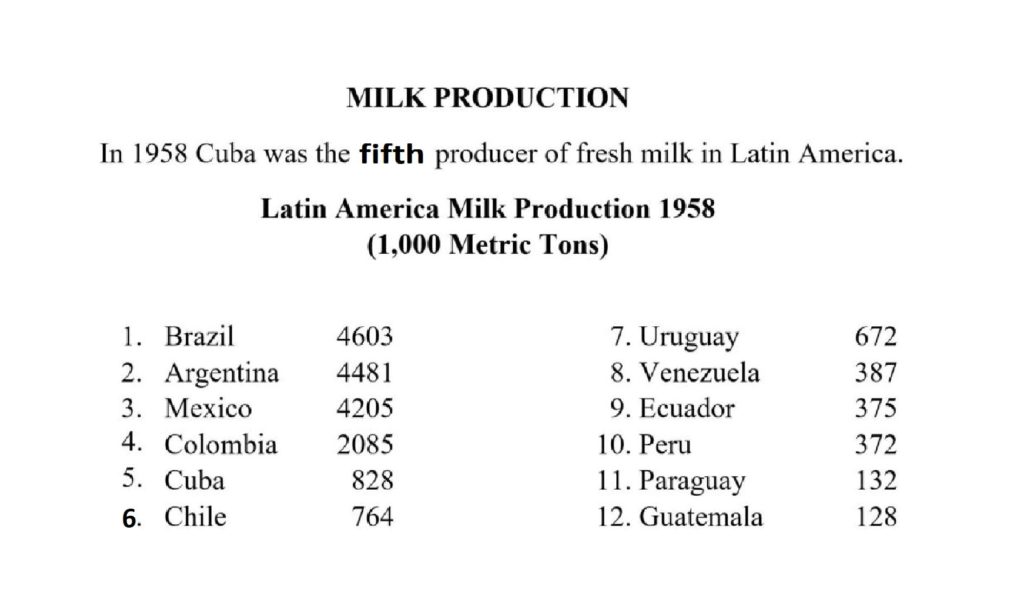
This is the first essay by the Cuban Studies Institute, in a research series on the successes of Cuba’s economy as a free market, private property, wealth producing Republic (1902-1958).
In the years 1952-1958, it was an extraordinary achievement for Cuba to be able to sustain economic growth, within a successful nationalistic trend aimed to reach agricultural self-sufficiency to supply the people’s market demand for food.
A large segment of the Cuban population successfully carried on the market demand for food, while the national institutions were collapsing in the midst of a political violent rebellion.
During the last decade of the free Republic (before it was crushed by the totalitarian Marxist-Leninist catastrophe), the Cuban food supply grew steadily to provide a highly, productive system that in daily calories consumption, ranked Cuba third in Latin America.

BEEF PRODUCTION
By the 1950’s, cattle and beef products were Cuba’s second industry. From the end of WWII until 1958, the cattle industry improved in quality and quantity. Imports of numerous pure breed animals as well as modern technification, contributed to a significant improvement of the cattle industry. The beef and milk cattle production growth became a positive factor in the strength of the national economy by providing hundreds of thousands of jobs in direct production and byproducts items.
The beef production employed over 100,000 workers in well paid jobs. When adding family members, the total was over 300,000 people. The Province of Camagüey was basically the largest producer of beef, while Havana Province showed a higher proportion of milk production.
The most prominent beef cattle were the Zebu, originated in South West Asia, that adapted best to Cuba’s soil pasture and tropical climate, and when crossed with the “Criollo” produced a large, magnificent animal.
The Zebu has a hump above the shoulder and provides good meat and milk. In 1958, the Zebu and the mixed Criollo accounted for 90% of the six million heads of cattle in existence in the island.
With a population of approximately 6 million, Cuba’s beef industry exhibited one head of cattle per person.
For several years, Cuban ranchers were importing good breed cattle of high market value like the Angus, Aberdeen, Charolasi, Holstein, Jersey, Brown Swiss, Shorthorn and the popular Santa Gertrudis.
The Cuban ranchers were modern managers who ran an efficient industry, producing some of the best “tropical cattle” in the world with a meat yield of 54% per head. With the increase demand for beef and milk, the Cuban ranchers where highly motivated to raise the nutritional value of their feeding fields grasses by adding the “Bermuda” and” Pangola” to the existed “Texana,” “Guinea” and “Panama.”
Beef was among the favorite dishes of Cubans. As a matter of fact, in 1958, Cuba ranked fourth in meat consumption in Latin America, after Argentine, Uruguay and Paraguay, with a yearly per capita estimated at 78.8 pounds, and a weekly per capita equal to a pound and a half of good quality meat, at a low price, and was exporting beef to the U.S.
The Cuban ranch production of beef before the revolution was among the highest yield in the world. For the Cuban free market economy in the 1950’s, this was a monumental achievement.

The excellent growth in quantity and quality achieved by the cattle industry brought about a remarkable increase in the production of milk, which hastened the manufacture of butter, cheese, and evaporated and condensed milk serving the national market. In 1951, Cuba imported 2 million pounds of butter and produced 1.5 million pounds; by 1958 Cuba’s production of butter had increased to 4.3 million pounds and reduced imports to 586 pound per year.

During this period, there were seven industrial plants for evaporated and condensed milk and 59 ice cream factories serving the needs of the market.
Between 1959-1961, private property and a free market economy was outlawed, and a totalitarian, Marxist-Leninist system of government was implemented (beef and milk were and continue to be severely rationed). Sixty years has gone by and the evident economic catastrophe has evolved into a national tragedy.








